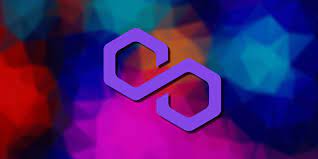Polygon and its Layer-2 Scaling Solutions

In the world of blockchain technology, scaling has always been a major challenge. As the popularity of decentralized applications (dApps) grows, so does the demand for more scalable and efficient networks. This is where Polygon, formerly known as Matic Network, comes in. In this article, we’ll explore what Polygon is, its layer-2 scaling solutions, and how it is improving the scalability of the Ethereum network.
Introduction to Polygon
Polygon is a Layer-2 scaling solution for Ethereum that aims to solve the scalability issues faced by the network. It provides a framework for building and connecting multiple blockchain networks, allowing for faster and cheaper transactions. Polygon achieves this by using Plasma, a Layer-2 scaling technology that creates a network of side chains that are connected to the Ethereum main net.
The Problem with Ethereum’s Scalability
Ethereum has been facing major scalability issues due to the increasing number of apps and users on the network. As a result, transaction fees have skyrocketed, and transaction times have become slower. This has led to a lot of frustration among users, developers, and businesses looking to use the network.
How Polygon is Solving Ethereum’s Scalability Issues
Polygon provides a solution to Ethereum’s scalability issues by using Layer-2 scaling solutions such as Plasma and Optimistic Rollups. These solutions allow for faster and cheaper transactions by offloading the computation from the Ethereum mainnet to side chains. This not only reduces the load on the Ethereum main net but also makes it possible for developers to build more complex dApps that require faster transaction times.
Understanding Layer-2 Scaling Solutions
Layer-2 scaling solutions are essentially protocols that are built on top of a blockchain network to provide faster and cheaper transactions. They work by taking the computation off the main chain and processing it on a side chain, which is then connected back to the main chain. This reduces the load on the main chain and allows for faster and cheaper transactions.
The Advantages of Using Polygon
There are several advantages of using Polygon, including:
- Faster transaction times
- Lower transaction fees
- Interoperability with other blockchain networks
- Scalability for dApps
- Easier development of dApps
How to Use Polygon
To use Polygon, developers can either build their own side chains or use existing ones that are already connected to the network. Polygon provides a software development kit (SDK) that developers can use to build and deploy their dApps on the network.
Polygon’s Future Plans
Polygon has several plans for the future, including:
- Integrating with other blockchain networks
- Expanding the number of side chains connected to the network
- Improving the developer experience by providing better tools and resources
- Increasing adoption by businesses and enterprises



